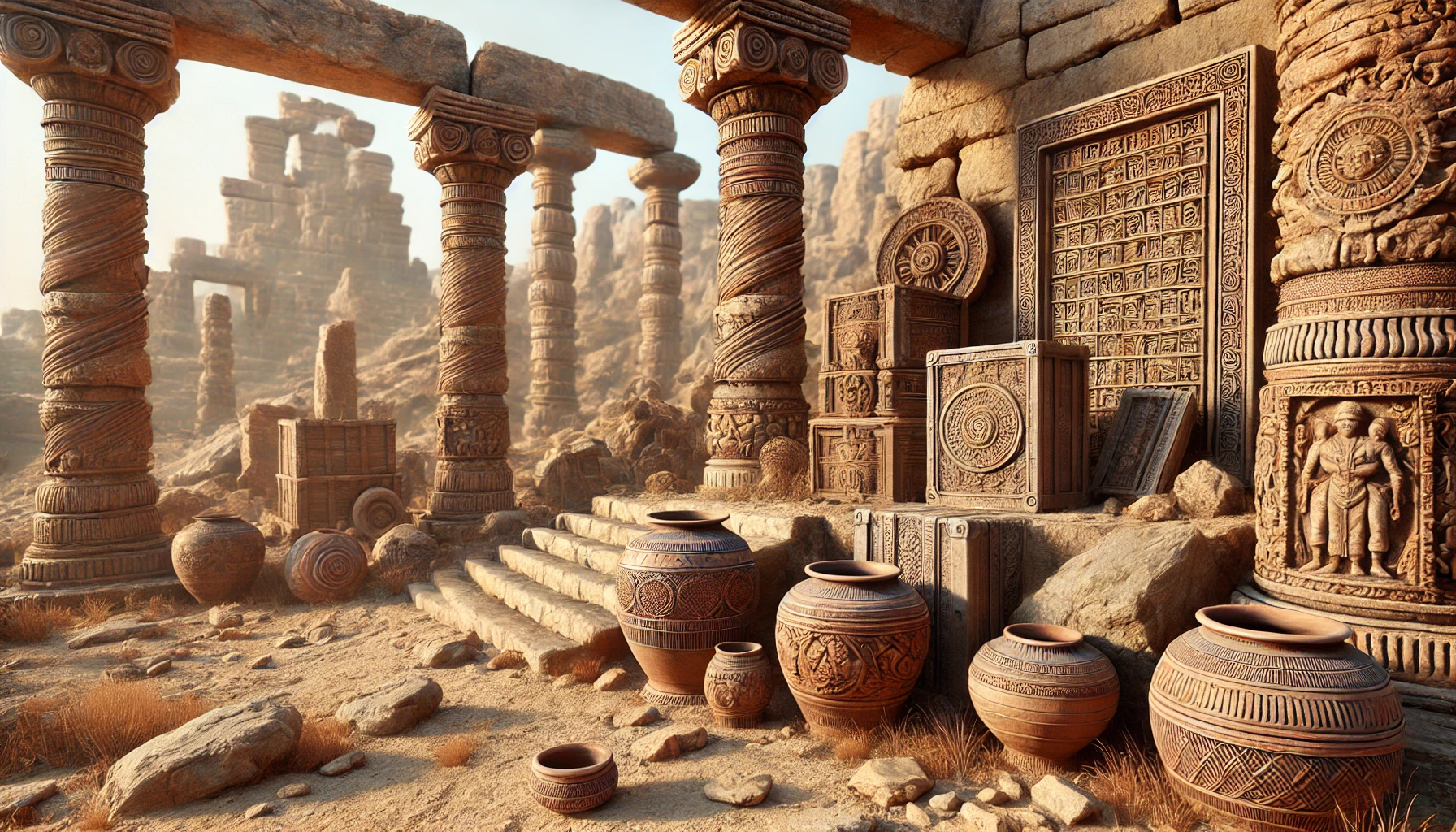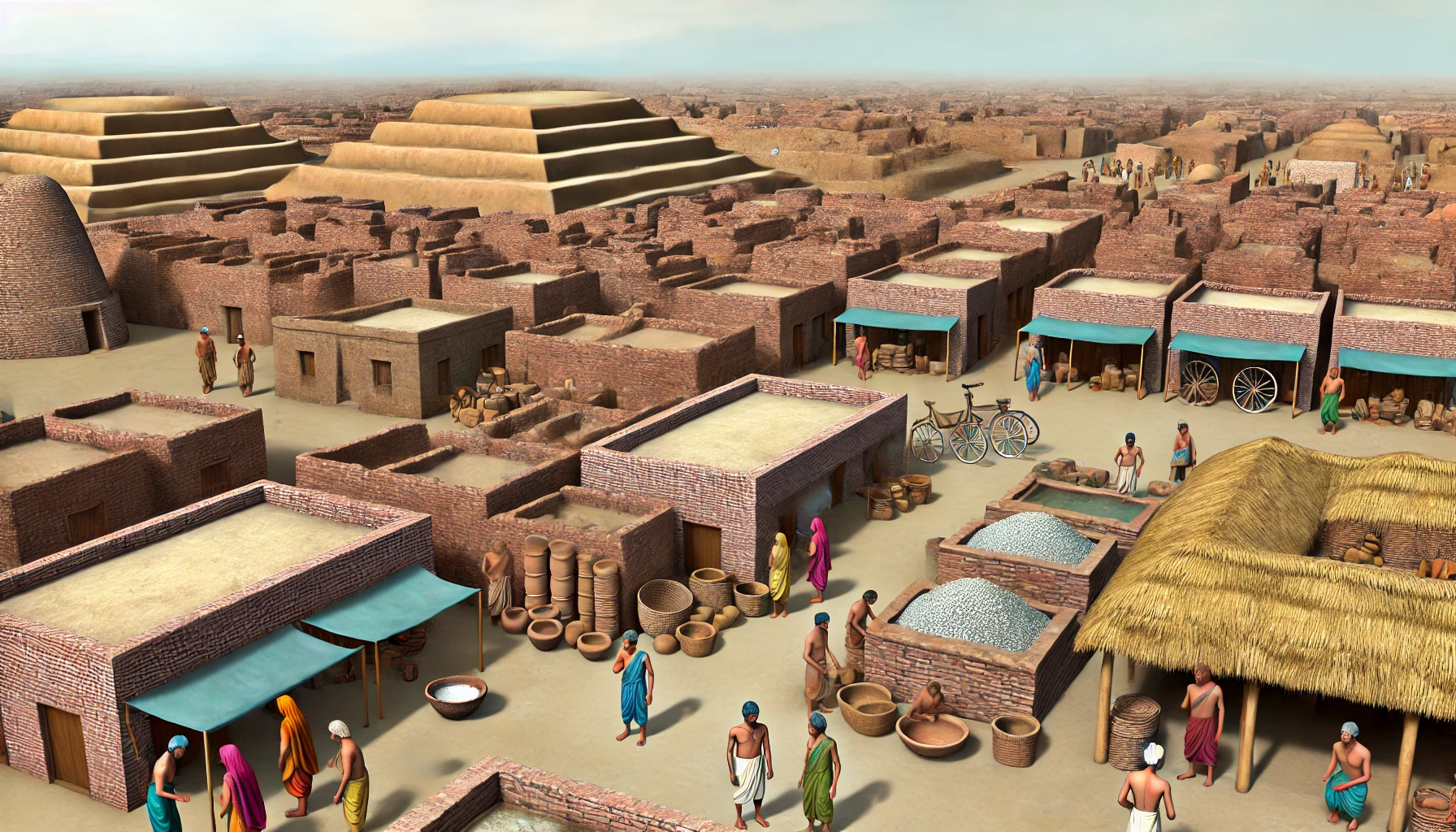Ancient Indian history is vast and fascinating field. The history of ancient India encompasses the rich and diverse cultural, social, political, and economic developments of the subcontinent. These developments span from prehistoric times to the early medieval period. The era is marked by significant achievements in art, architecture, literature, science, and philosophy. They have left an indelible mark on the world. Understanding the ancient history of India is crucial for comprehending the roots of contemporary Indian society and its cultural heritage.
Studying ancient Indian history provides insights into early civilizations such as the Indus Valley. It also reveals the development of major religious traditions, including Hinduism, Buddhism, and Jainism. It also explores the rise and fall of powerful dynasties such as the Mauryas and the Guptas. Great cities emerged during this period, showcasing the originality and creativity of ancient Indian civilization. Trade routes were established, and monumental architecture was created, reflecting the era’s innovation.
Exploring ancient Indian history involves examining archaeological findings, deciphering ancient scripts, and analyzing literary sources to reconstruct the past. The journey through time reveals the dynamic interplay of various cultures and the evolution of social structures. These enduring legacies continue to influence modern India and the world at large. The ancient history of India offers a captivating and enlightening experience for students, history enthusiasts, and curious readers alike. The rich cultural heritage and diverse dynasties provide endless fascination and insight.

Prehistoric India
Prehistoric India refers to the period before the advent of written records. It spans from the earliest human settlements to the beginning of the Bronze Age. The era is characterized by the development of early human societies and the use of stone tools. The study of prehistoric India, through archaeological discoveries and artifacts. It provides invaluable insights into the early human adaptation and cultural evolution on the Indian subcontinent.
The Stone Age
- Paleolithic Era (Old Stone Age): The Paleolithic period is characterized by the use of large, unpolished stone tools. Evidence suggests early human life with rudimentary stone tools found across various parts of India. Examples like the Soan Valley and the regions of Rajasthan.
- Mesolithic Era (Middle Stone Age): The Mesolithic period was marked by the appearance of microliths or small stone tools. This era witnessed a transition to settled life and the beginnings of agriculture.
- Neolithic Era (New Stone Age): During the Neolithic period, people began domesticating animals and introducing agriculture. They also started using polished stone tools for various purposes. Important sites include Mehrgarh in Balochistan (now in Pakistan) and Hallur in Karnataka.
The Indus Valley Civilization
The Indus Valley Civilization flourished between 3300 BCE and 1300 BCE in the ancient history timeline. It was characterized by advanced urban planning, sophisticated craftsmanship, and vibrant trade practices. Major sites like Harappa and Mohenjo-Daro provide information about the life, culture, and technological advancements of this Bronze Age civilization. The study of the civilization is an important for a candidate approaching ancient history UPSC.

Key Features
- Urban Planning: Cities were characterized by a grid system of streets, which indicates advanced urban planning and municipal organization. Buildings were made primarily of baked bricks, with an emphasis on durability and weather resistance. Notable architectural remains include the Great Bath at Mohenjo-Daro, granaries, and dockyards at Lothal. They highlight the civilization’s emphasis on public welfare and economic prosperity.
- Social Structure: Details about the social hierarchy in the Indus Valley Civilization are hard to track. However, the uniformity in housing and artifacts like pottery suggests a class-based but more egalitarian society compared to contemporary civilizations.
- Economic Activities: The people of Indus practiced agriculture extensively, cultivating wheat, barley, and possibly rice. They employed animal-drawn plows for farming, which was ahead of its time. The civilization engaged in both local and long-distance trade. The discovery of seals and weights suggests a system of trade regulated by a standardized measurement. The trade relations extended to Mesopotamia, evidenced by Indus seals found at various Mesopotamian sites.
Decline of the Civilization
The decline of the Indus Valley Civilization happened around 1900 BCE in the ancient history timeline. It is not well understood to date. Climatic changes, declining trade, and possible invasions are suggested as factors for the decline of the Indus Valley Civilization. These factors collectively contributed to the civilization’s eventual downfall. The shift in the course of the Indus River is also considered a major factor.
Vedic Period
The Vedic Period is a significant era in the ancient history of India. It marks the transition from the prehistoric to the historical period. The vedic society laid the foundational aspects of what would become Hindu culture and society.
Early Vedic Age (1500-1000 BCE)
The early Vedic age is marked by the composition of the Rigveda, the oldest of the Vedas. The society was primarily pastoral and Nomadic and organized into tribes known as Janas. The society was egalitarian to a degree, but the seeds of a class system based on occupation had started developing.
Later Vedic Age (1000-500 BCE)
The transition of society from pastoral to agrarian marks the later Vedic age. It led to the rise of the varna system and the expansion of iron usage. This period also saw the composition of the remaining three Vedas.
Mahajanapadas
The Mahajanapadas were sixteen powerful and prosperous states that emerged in ancient India around the 6th century BCE. These states marked a significant phase in Indian history. They reflect the transition from tribal societies to more complex and organized political entities. The Mahajanapadas were located in the Indo-Gangetic plains and other parts of northern and central India. They include regions that are now part of modern-day Uttar Pradesh, Bihar, Rajasthan, and Madhya Pradesh.
Among the most prominent Mahajanapadas were Magadha, Kosala, Vatsa, and Avanti. Magadha, under rulers like Bimbisara and Ajatashatru, grew exceptionally powerful. It eventually played a crucial role in the rise of the Maurya Empire. These states varied in their forms of governance. Some were monarchies, ruled by kings with centralized power. Power was shared among a group of people in systems known as Ganas or Sanghas, which were oligarchies.
The Mahajanapadas contributed significantly to Indian culture, economy, and society. They facilitated trade, urbanization, and the spread of new religious ideas, including Buddhism and Jainism. Their legacy is crucial for understanding the early political and social landscape of ancient India.
Major Dynasties and Empires
Mauryan Empire (322-185 BCE)
Chandragupta Maurya founded the Mauryan Empire, which was expanded by Ashoka the Great. It is known for its administrative innovations and the spread of Buddhism. The vast territory of the empire, with Pataliputra as its capital. The administration structure described in Chanakya’s Arthashastra unified it.
Gupta Dynasty (320-550 CE)
The Gupta Dynasty is often referred to as the “Golden Age ” of India. Its significant achievements in science, arts, and literature are important . The Gupta period saw a flourishing of trade, both internally and with other parts of Asia and Europe. The era witnessed the proliferation of guilds, which played a crucial role in the economy. The Gupta period saw the production of significant literary works including the Puranas, the Mahabharata, and the Ramayana. Kalidasa, the classical Sanskrit author, dramatist, and poet, illuminated the age with his works like ‘Shakuntala’ and ‘Meghaduta.’ The Gupta Dynasty represents a pinnacle of cultural development and political administration in ancient India.
Relevance
Ancient Indian history is a crucial part of the UPSC syllabus, especially in General Studies Paper 1. It covers key events, cultural developments, and historical periods. It provides insights into India’s cultural, social, and political foundations, enhancing appreciation of the nation’s heritage and diversity. Studying ancient history sharpens critical thinking and analytical skills, helping aspirants connect past and present events. This knowledge is vital for essay writing and interviews, requiring a deep understanding of historical contexts. It enables comparative analysis of governance and societal structures and fosters national pride and cultural awareness. It promotes a holistic understanding by intersecting with archaeology, art, literature, and religion.
| Ancient History UPSC Notes |
| Ancient Indian history begins with the Indus Valley Civilization (3300–1300 BCE), known for its urban planning, advanced drainage systems, and trade networks. The Vedic Period (1500–500 BCE) follows, characterized by the composition of the Vedas, the rise of early Hinduism, and the establishment of social structures. The Mahajanapadas (600–300 BCE) era marks the formation of large states, including Magadha, Kosala, and Vatsa, and the spread of Jainism and Buddhism. The Maurya Empire (322–185 BCE) under Chandragupta Maurya and Ashoka unified much of India, promoting trade, administration, and the spread of Buddhism. The Gupta Empire (320–550 CE), often called the Golden Age of India, saw advancements in science, mathematics, astronomy, literature, and art. The Sangam Period (300 BCE–300 CE) in South India highlights the flourishing of Tamil literature, trade, and the early Chola, Chera, and Pandya kingdoms. The Satavahana Dynasty (1st century BCE–3rd century CE) ruled the Deccan region, contributing to trade, culture, and the spread of Prakrit literature. The post-Gupta period saw regional kingdoms like the Chalukyas, Pallavas, and Rashtrakutas rise to power, each contributing uniquely to India’s cultural and political landscape. |

